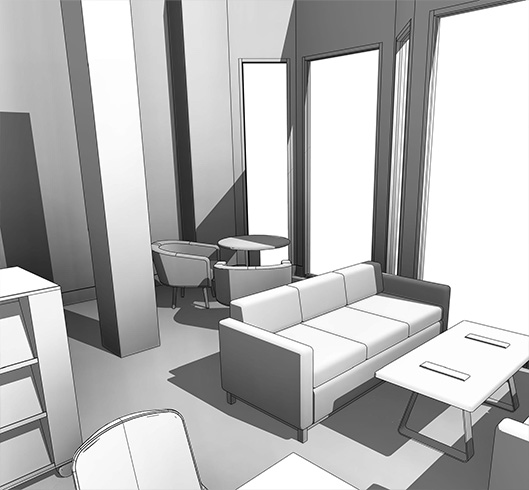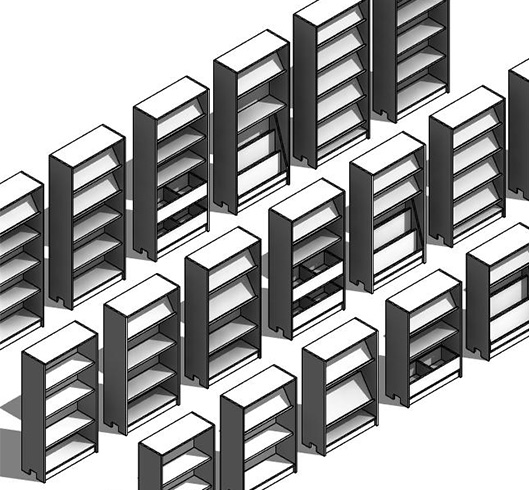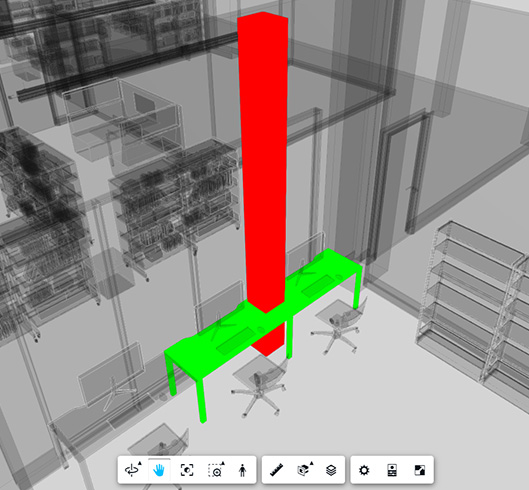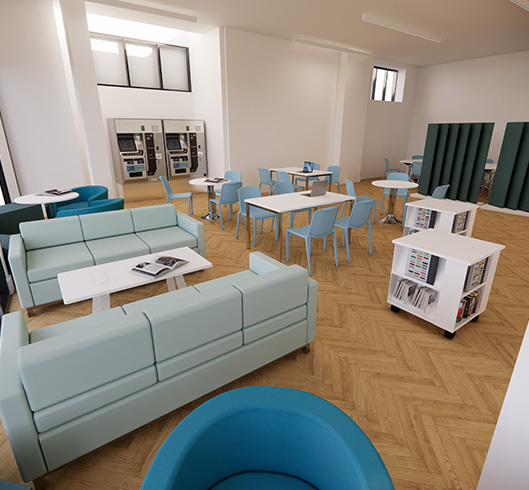How Revit Families Benefit Your Business
In the world of architecture and design, efficiency and precision are paramount. As professionals in these fields seek to optimise their workflows and enhance collaboration, tools like Revit and its Families have become indispensable. This blog delves into how architects, interior designers, specifiers, and furniture resellers can leverage Revit Families to improve their practices and deliver superior results.
Understanding Revit Families
Before diving into the benefits, let’s clarify what Revit Families are. Revit Families are pre-configured components within Autodesk Revit software that can represent a wide range of design elements— anything from walls and windows to furniture and fixtures.
At Diane Butterworth Ltd the majority of components are direct digital representations of a manufacturer or supplier’s product offer. In other words, a digital library of their physical products. Our expert team is also able to produce bespoke digital assets. This may be required to work with a unique window in an older building, for example.
1. Enhanced Collaboration and Communication
Specifiers
For specifiers, Revit Families allow for easier communication of technical requirements. They can incorporate detailed specifications directly into the Families, making it simple for all parties to understand the material, dimensions, and installation guidelines. This transparency helps reduce discrepancies between the design intent and the final execution.
Architects and Interior Designers
One of the primary benefits of Revit Families is improved collaboration among project stakeholders.
Architects and interior designers can create a shared project that includes the latest design elements. This ensures everyone is working with the same information, minimising miscommunication and errors.
When architects utilise standardised Families for components like windows, doors, and furniture, they ensure that interior designers have access to the exact specifications needed for their designs. This synchronicity fosters a cohesive design vision and streamlines the approval process.

2. Increased Efficiency and Productivity
Automating Routine Tasks
Revit Families enable architects and designers to automate repetitive tasks, significantly boosting productivity.
For instance, once a Family is created, it can be reused across various projects. This means that instead of starting from scratch every time, professionals can simply load existing Families, saving hours of design time.
3. Improved Accuracy and Precision
Accurate Representations
Using Revit Families ensures that all design elements are represented accurately in the 3D model.
This precision is critical for architects and designers, as it allows for better visualisation of the project and ensures that all elements fit together as intended.
At the start of most construction projects utilizing the BIM process, the specific goals for BIM implementation are outlined in the BIM Execution Plan (BEP).
Knowing the end goal defines what information needs to be gathered and stored throughout the project. If the project’s initial focus is on clash detection, the geometry becomes crucial. Additionally, if the project involves assets that require ongoing maintenance (such as air conditioning units), this should be specified in the BEP, as COBie data will need to be exported for use in FM systems.
Clash Detection
For architects and interior designers working within complex environments, Revit’s clash detection feature can be a game changer.
By incorporating accurate Families, potential conflicts between different elements (such as plumbing and structural components) can be identified early in the design process.
This proactive approach minimises costly on-site adjustments and delays. Models can also be used on site, using augmented reality. Since the Models are coordinated to real work locations, comparing existing installed items with the suggested design model is now possible.


4. Real-world rendering
Revit Families can enhance the visual appeal of architectural presentations. Using high-quality, well-designed Families, architects and interior designers can create realistic renderings that help clients visualise the end result.
Using real-world rendering enables users to walk through the space onscreen or AR headsets.
5. Streamlined Project Management
Integrated Workflows
For all professionals involved—architects, interior designers, specifiers, and furniture resellers—Revit Families contribute to streamlined project management.
Integrated workflows help ensure that all elements are aligned with the project timeline and budget. This coordination is crucial for successful project delivery.
Data Management
Revit Families also come with embedded metadata, which can be invaluable for managing project information.
This includes everything from cost estimates to material specifications. For furniture resellers, this means better inventory tracking, which also benefits the building’s facilities managers. For example, a schedule of all items could be created within the project, which can then be exported into Excel to produce a quotation. These schedules can also help install teams, who can see how many items are needed per room and where they are meant to be located.
In summary
The integration of Revit Families into the workflows of architects, interior designers, specifiers, and furniture resellers is more than just a trend—it’s a fundamental shift towards greater efficiency, accuracy, and collaboration in the design process – a term we use at Diane Butterworth Ltd is ‘digital construction’.
By leveraging the power of Revit Families, professionals can enhance their design capabilities, rather than using generic models to improve communication, and ultimately deliver exceptional results that meet and exceed client expectations.
About Diane Butterworth Ltd.
We have been modelling fully parametric Revit Families since 2015.
Our service allows clients, including architects and designers, to integrate accurate elements into projects.
With expertise in BIM, Diane Butterworth Ltd ensures that all models are parametric, detailed and ready for use in Revit software, streamlining the design process.
For more information on our Revit Families service, download our brochure here
We also offer a free Revit families download area here